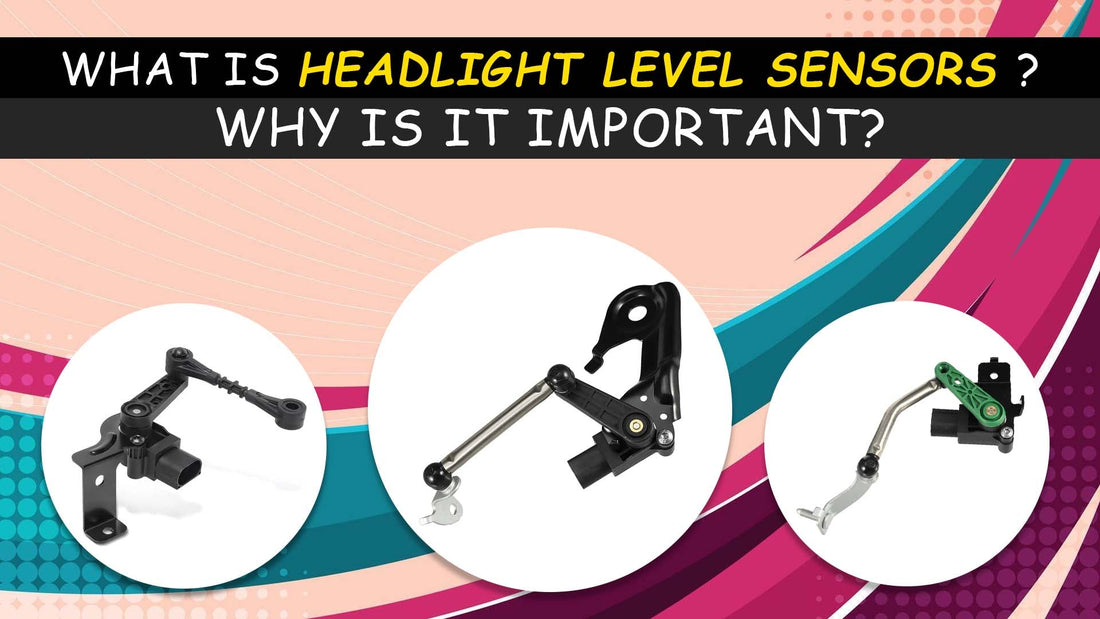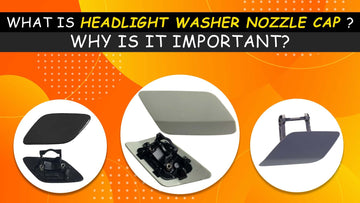
Illuminating the Road Ahead: Understanding Headlight Level Sensors

Modern vehicles are packed with sophisticated technology designed to improve safety and convenience. Among these crucial components, the headlamp level sensor often operates behind the scenes, quietly ensuring optimal visibility. Whilst you might not consciously think about it, this little device plays a significant role in how well you can see the road, particularly at night or in challenging conditions. In this article, we will explain what headlamp level sensors are all about, why they're needed, how they work and why they're important.
What Are They and Why Are They Necessary?
Essentially, a headlamp level sensor is a device that monitors the vehicle’s orientation and adjusts the vertical beam of the headlamps accordingly. Think about it: when your car is heavily loaded with passengers or cargo, the rear end tends to dip, causing the front to rise. This change in vehicle angle means that your headlamps are now pointing too high, potentially blinding oncoming drivers and failing to illuminate the road directly in front of you. Similarly, under acceleration or braking, the vehicle's nose dips and rises respectively, affecting light distribution.
Headlamp level sensors mitigate these issues by detecting the car's angle and relaying this information to the headlamp aiming system. This allows for dynamic adjustments to be made to the headlamp beam, keeping it focused on the road ahead, where it is most effective.
How Do They Work?

Image By: Hazzydayz
These sensors are generally based on position-sensing technology, often using a rotating arm linked to a potentiometer. This arm is typically mounted on the suspension system, usually on both the front and rear axles. As the suspension moves up or down, the arm also moves, which alters the potentiometer's resistance. This change in resistance is interpreted by the vehicle's control unit as a change in vehicle orientation.
The control unit then sends signals to the headlamp aiming motors, which adjust the beam's vertical position. This adjustment is usually swift and precise, happening in real-time as the vehicle travels over uneven surfaces or experiences changes in load.
More advanced systems may employ different sensor technologies, such as magnetic or optical sensors, offering higher precision and even faster response times. These sophisticated approaches contribute to further refinements in lighting performance.
Types:
While the core functionality remains consistent, there are a few primary placements and implementations:
-
Front Axle Sensors: These mainly measure the angle at the front of the car and are often coupled with a similar sensor at the rear.
-
Rear Axle Sensors: As mentioned, frequently combined with the front sensor, these monitor changes at the rear of the vehicle.
-
Integrated Systems: Some newer systems might use an integrated approach that merges information from various sensors, including those within the Electronic Stability Control (ESC) system, to deliver even more refined and accurate beam control.
The Benefits of Functional Headlamp Level Sensors:
The advantages of these sensors are multifaceted:
-
Enhanced Safety: By maintaining correct headlamp aim, these sensors maximise road illumination. This improves the driver's visibility, allowing for earlier hazard detection and quicker reactions.
-
Reduced Glare: By automatically lowering the beam as needed, these sensors drastically reduce the likelihood of blinding oncoming traffic, fostering a safer driving experience for everyone.
-
Optimised Light Distribution: Regardless of the vehicle's load, the sensors ensure the light is directed where it's most beneficial – onto the road directly ahead.
-
Compliance with Regulations: Many regions mandate the use of auto-levelling headlamps for cars equipped with certain types of high-intensity lamps, like Xenon or LED systems. This makes these sensors a compliance essential.
Troubleshooting:

Image By: E46fanatics
If you experience problems with your headlamps, like beams that are aimed too high or too low, or fail to adjust, there might be a fault in the level sensor system. Common issues include:
-
Sensor Failure: The sensor itself might be damaged or malfunctioning, either due to physical impact or electrical problems.
-
Wiring Issues: Broken or corroded wiring can prevent the sensor from communicating effectively with the control unit.
-
Control Unit Problems: Occasionally, the vehicle's computer unit itself can be the cause of problems.
-
Mechanical Issues: In some situations, the mechanical linkage connected to the sensor can become damaged or disconnected.
When suspecting sensor issues, consult with a trained mechanic who can accurately diagnose the problem and provide the necessary repairs.
In Conclusion:
Headlamp level sensors are an integral part of modern automotive technology, quietly working to improve both driver visibility and overall road safety. They represent a prime example of how advanced sensors and control systems can make driving easier, safer, and more enjoyable for everyone. Whilst they might be a feature you rarely think about, their impact on your driving experience is significant, highlighting the importance of ensuring they are functioning properly. Understanding how these devices operate emphasises the continuous advancements occurring within the automotive world.
______________________________
This blog post has the potential for regular updates to enhance its quality.
No comments








0 comments